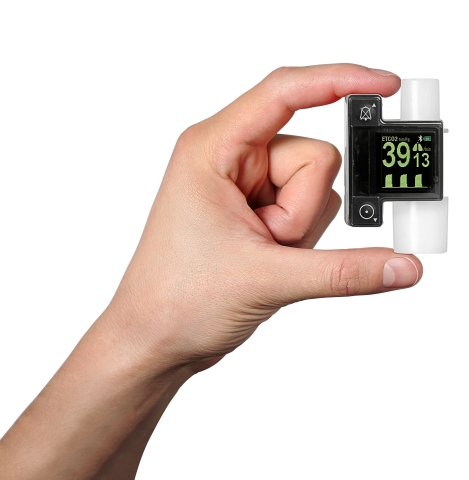TOKYO– Masimo (NASDAQ: MASI) today announced the findings of a study published in the European Journal of Pediatrics in which Dr. Masashi Hotta and colleagues at the Osaka Women’s and Children’s Hospital in Japan found that the Masimo EMMA® Portable Capnograph “may be considered an effective monitoring device” for mechanically ventilated preterm infants (neonates).1
Noting the importance of maintaining an appropriate range of partial pressure of arterial carbon dioxide (PaCO2) in preterm infants, especially while undergoing mechanical ventilation in the neonatal intensive care unit (NICU), the researchers sought to evaluate whether noninvasively monitoring end-tidal carbon dioxide (EtCO2) with EMMA could help clinicians maintain neonatal PaCO2 in the delivery room. They chose EMMA not only because of its portability but because it offers a solution with a small dead space (1 mL). The researchers enrolled 40 neonates (gestational age of 26+0 to 31+6 weeks) who required intubation in the delivery room (the EMMA monitoring group) and compared their PaCO2 value, either at admission to the NICU or 2 hours after birth, with that of 43 infants who did not undergo EMMA monitoring (the historical control group). They defined “appropriate” PaCO2 as 35 – 60 mmHg, as measured using a blood gas analyzer.
The researchers found that the proportion of infants with appropriate PaCO2 was greater in the EMMA group than in the control group (80% vs. 42%, p = 0.001). Stratified according to birth weight (< 1000 g vs. > 1000 g), they found that in smaller neonates, there was no significant difference in the proportion of infants with appropriate PaCO2 between groups, but in the larger cohort, the rate of appropriate PaCO2 was significantly higher in the EMMA group: 93% vs. 44%, p < 0.001.
The study authors concluded that EMMA “facilitated the maintenance of an appropriate PaCO2 for mechanically ventilated pre-term infants, especially infants with birth weight ≥ 1000 g, in the delivery room.” They noted that the main strength of their study was that they “collected intervention data prospectively and showed the feasibility of using a portable capnometer during resuscitation of intubated preterm infants” – the first study of its kind.
EMMA provides seamless mainstream capnography for patients of all ages in a compact, easily portable device. The instrument requires no routine calibration and minimal warm-up time, with accurate EtCO2 and respiration rate measurements and continuous EtCO2 waveforms displayed within 15 seconds.


